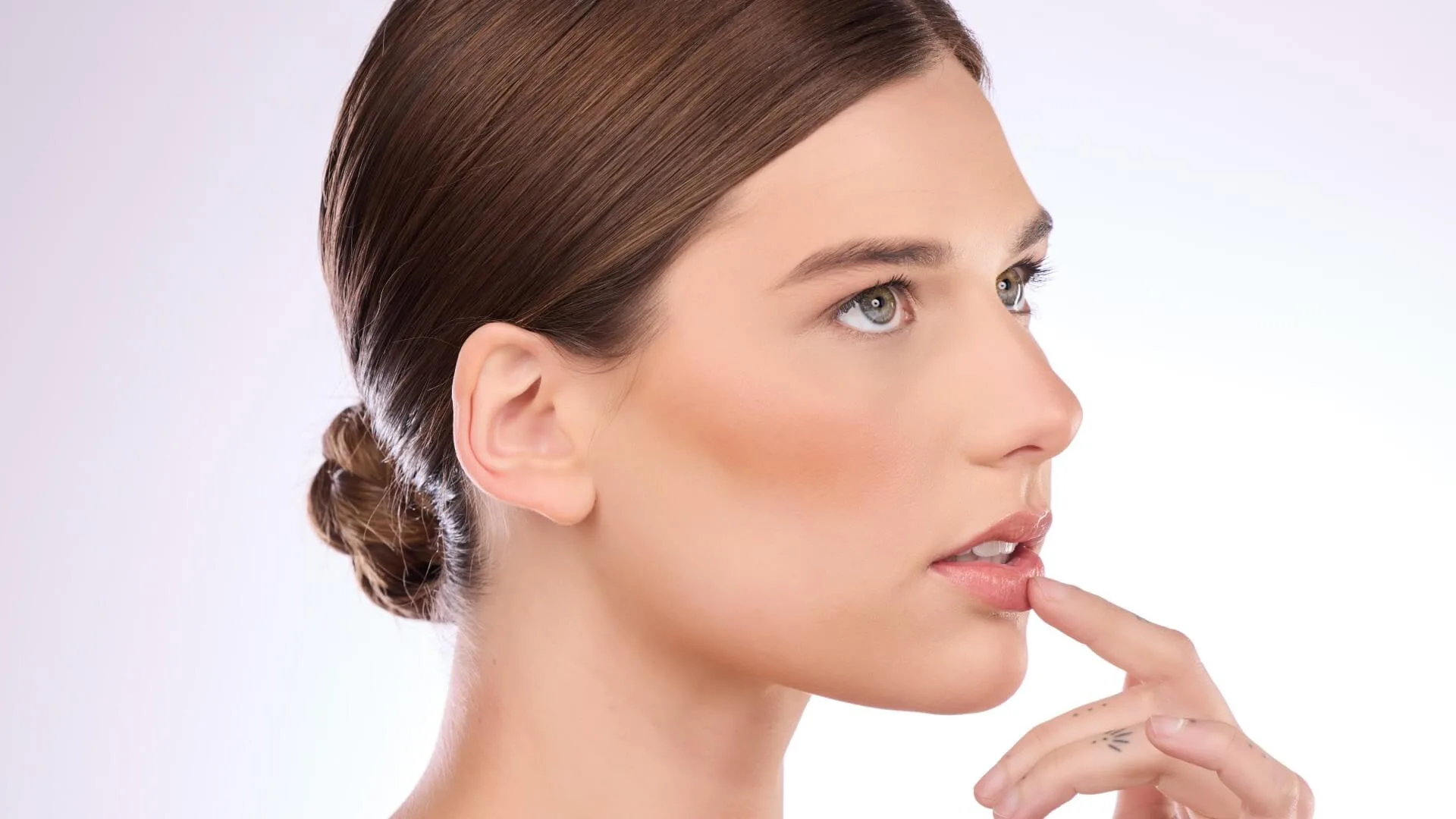Whether you have had large breasts since birth, experienced sagginess after childbirth, or undergone significant weight loss, you may have considered getting a breast reduction for some time.
Changing your appearance for the sake of your wellbeing does not have to be a stressful journey, though. If you wish to understand the aspects and types of breast reduction, feel free to dive in!
What is Breast Reduction?
Breast reduction, also known as reduction mammaplasty, is a surgical procedure that removes excess breast tissue, fat, and skin to achieve a breast size more proportionate to the body and to alleviate discomfort.
It is one of the most common plastic surgeries due to its effectiveness in reducing chronic pain on neck and back, skin irritation, and poor posture.
Moreover, several studies claim that breast reduction can lower the risk of breast cancer by reducing the amount of tissue that could potentially become cancerous in the future, providing both aesthetic and health benefits.
Did you know that breast reduction is frequently included in mommy makeover surgeries?
Click to find out more! 🔍
Types of Breast Reduction
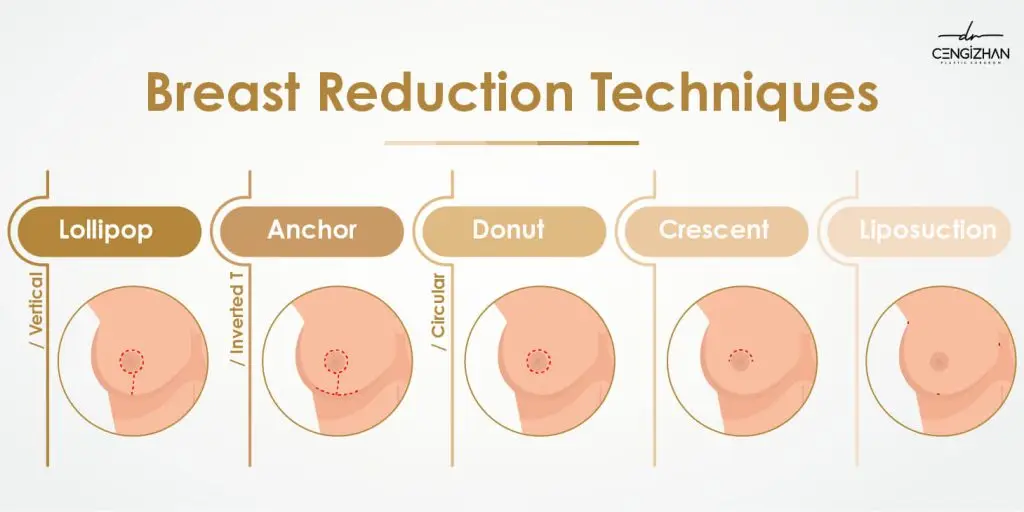
Breast reduction procedures can be tailored to meet individual needs. Each method differs in terms of incision patterns and techniques used to remove breast tissue and reshape the breasts, offering various options based on the patient’s anatomy and desired outcome.
1. Lollipop Breast Reduction
The lollipop or vertical breast reduction is an operation method that involves making two incisions: one around the edge of the areola and another running vertically from the bottom of the areola to the natural crease beneath the breasts.
This method allows for:
- Significant breast tissue removal
- Reshaping, with less scarring compared to the anchor technique
The lollipop shaped incisions provide a balance between effective tissue removal and aesthetic outcomes, making it a popular choice for many patients.
2. Anchor Breast Reduction
This incision technique, also known as the inverted-T breast reduction, is characterized by three incisions: one around the edge of the areola, a second running vertically from the bottom of the areola to the breast crease, and a third along the breast crease.
This method allows for:
- Significant breast tissue removal which makes it ideal for extremely large breasts,
- Extensive access for reshaping the breast and repositioning the nipple, resulting in a more lifted and proportionate appearance.
Wanna combine your breast reduction with a breast lift? Discover the details here!
3. Donut Breast Reduction
Do not be surprised if you have not heard the term ‘donut’ yet! This specific incision type is also called doughnut breast reduction, circular breast reduction, periareolar breast reduction or benelli breast reduction. All definitions emphasize that this method involves only a single circular incision around the areola.
The donut shape of the incision allows for:
- The removal of excess tissue and skin while leaving a less noticeable scar around the areola.
This technique is suitable for patients seeking a modest reduction and lift with minimal scarring.
4. Crescent Breast Reduction
The crescent breast reduction is a less common surgical technique primarily used for minor breast reductions and lifts. It involves a single semicircular incision made along the upper half of the areola.
This method allows for:
- the removal of a small amount of breast tissue and skin, resulting in a subtle lift.
The crescent breast reduction is a perfect choice for patients who need minimal adjustments and want to minimize visible scarring, as the incision is limited to the upper edge of the areola only.
5. Breast Reduction with Liposuction

Breast reduction using liposuction—often referred to as breast liposuction—is the least invasive surgical technique for reducing breast size. Instead of removing tissue or skin, this method targets excess fat. It is performed through small incisions (similar to tiny holes), where a thin tube called a cannula is inserted to suction out the fat.
This method allows for:
- Moderate reduction in breast size with minimal scarring,
- A shorter recovery time.
Breast reduction with lipo is particularly a good option for younger patients with good skin elasticity, as it relies on the skin’s natural ability to contract and reshape after fat removal.
Stages of the Surgery
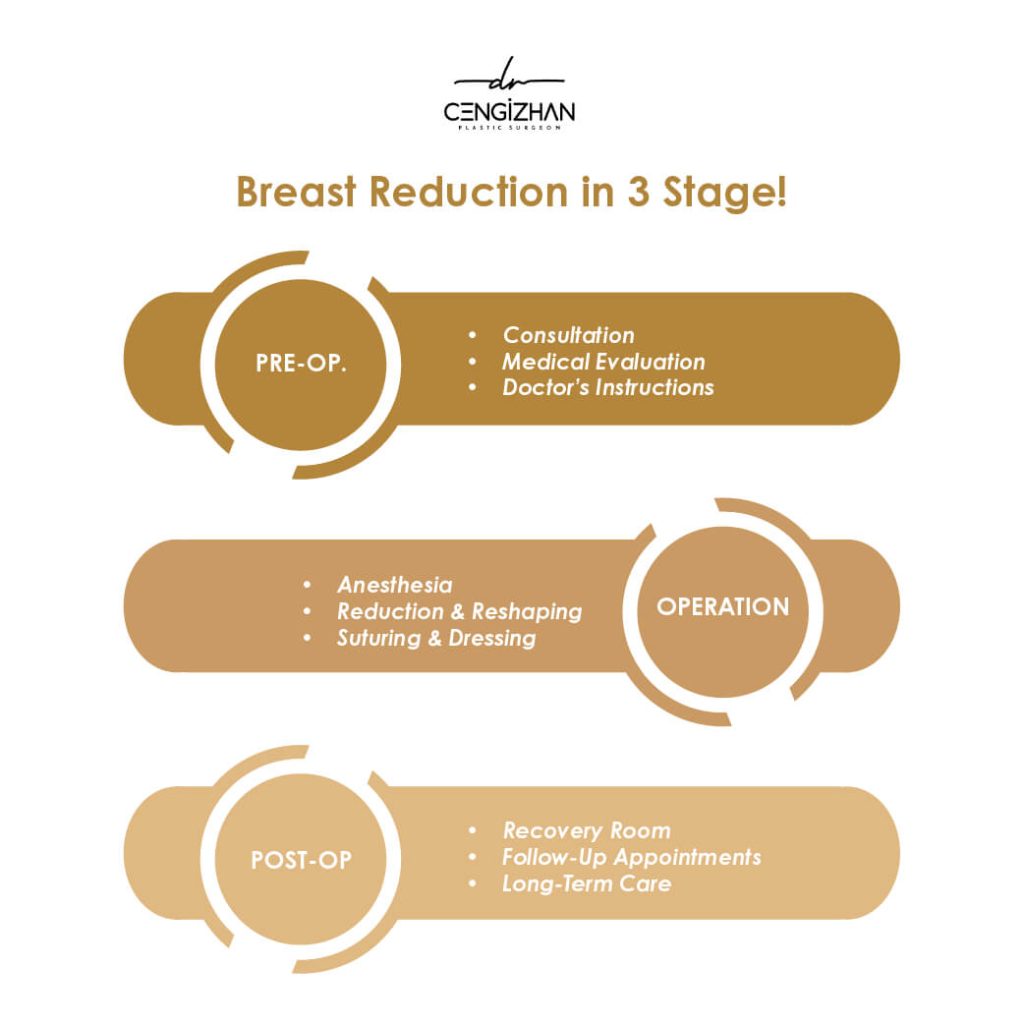
Pre-Operation
- Consultation
Firstly, you should discuss your goals, share your medical history, and communicate your expectations about the breast reduction results with your surgeon in advance.
Your surgeon will break down the potential risks and benefits of the procedure to you.
- Medical Evaluation
You will need to provide a blood sample and allow healthcare professionals to perform a mammogram or other diagnostic tests to ensure you qualify for breast reduction.
- Doctor’s Instructions
Pre-operative instructions regarding lifestyle changes will be provided to you. These warnings can include:
- Quit smoking if you are a smoker, as smoking can impair healing and increase the risk of complications.
- Refrain from certain medications such as blood-thinning drugs like aspirin, anti-inflammatory medications, and herbal supplements, as they may harm your recovery process.
- Stick to a healthy diet. Consuming a balanced diet rich in vitamins and proteins can improve your body’s healing capabilities after the surgery.
- Plan for assistance. You should arrange for someone close to you to drive you home after the surgery and help you during the initial recovery period.
During the Operation
- Anesthesia
First, you will be given general anesthesia to ensure comfort during the procedure. Your vital signs will be carefully monitored throughout the time you are under its effect.
- Reduction & Reshaping of Breasts
Removal of excess breast tissue, fat, and skin is performed in accordance with the incision patterns determined based on the extent of breast reduction. A breast lift is often performed alongside for better results.
The nipple can be optionally repositioned to a natural, aesthetically pleasing location on the breasts.
- Suturing & Dressing
The surgeon will close the incisions to finalize the creation of your new breasts! Wearing bandages, compression garments or surgical bras to support the breasts and minimize swelling is also an important step in terms of proper recovery.
Post-Operation
- Recovery Room
The monitoring process will continue in your room until you are proven to be fully awake and stable. This way, pain management and observation of any immediate complications can be resolved by healthcare professionals quickly.
- Follow-Up Appointments
Your doctor will schedule follow-up appointments to track & control your recovery. Detailed instructions on wound care, activity restrictions, and medication use will be provided to you as well.
- Long-Term Care
You can gradually resume day-to-day activities over weeks to months.
Swelling and scars will diminish over time, and final results will be typically evident after a couple of months as the breasts settle into their new shape.
You should make sure to maintain a stable weight so as not to alter the desired surgery results.
Recovery from Breast Reduction
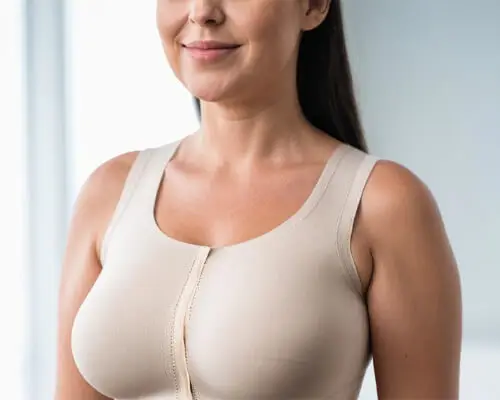
- In the first 1-2 days, you will need to rest in your room. Drainage tubes can be placed to reduce oedema by discharging excess fluid built up within the body right after the surgery ends. You must also wear a surgical bra to enhance the aesthetic results and limit your movement to an extent.
- After 3-5 days, the drains can be removed from your body if still present.
- During the first week, you should rest and restrict activities as much as possible. You must also continue wearing the surgical bra and follow scar-care tips consistently.
- After 2-3 weeks, the swelling and the bruising will considerably decrease. If your stitches are not dissolvable, they can be removed following a control examination by the doctor. Starting from this period, you can gradually resume light activities without forcing yourself too much.
- After 4-6 weeks, it is time to switch to wearing a more comfortable option: a sports bra. This way, your breasts can still be supported without being compressed greatly. You can now return to non-strenuous work and start gentle exercising.
- After 3-6 months, breasts will fully settle into their envisioned shape with minimal residual swelling. Feel free to resume your lifestyle before the operation, including doing intense exercises. The scarring will continue to fade (until after 12 months) as long as you keep applying the prescribed skincare regularly. A routine follow-up appointment can be arranged for your doctor to evaluate the long-term results.
Breast Reduction Costs
Calculating the total cost of breast reduction surgery can be complex, as it varies based on factors such as the surgeon’s experience, geographical location of the facility, anesthesia expenses, and the scope of the procedure.
Luckily, RealSelf, a reputable U.S.-based platform that aggregates patient reviews and medical data, offers valuable insights into fees reported by people who have undergone breast reduction surgery:
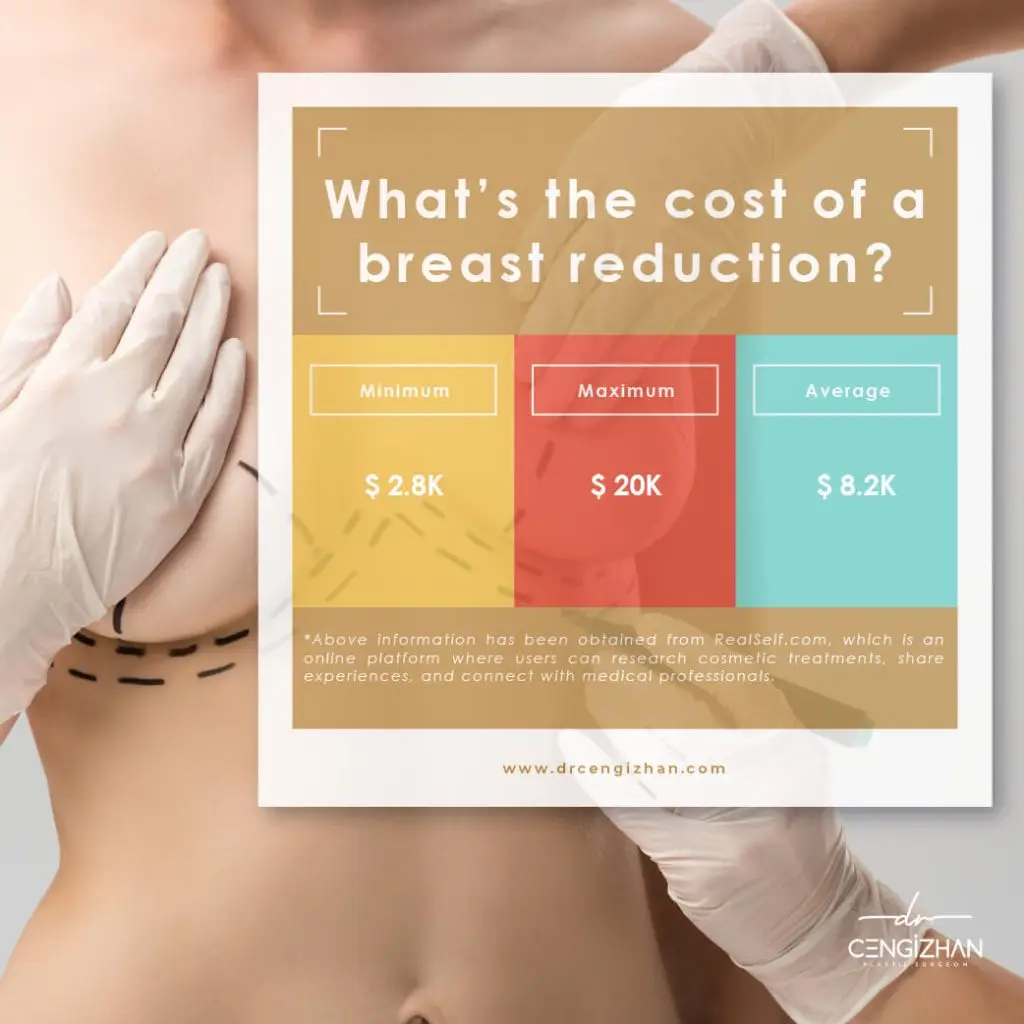
Breast Reduction Before & After Examples
Even after you read all the details of breast reduction, a simple before & after image can be more helpful in your final decision to get the treatment. Check out below how Dr. Cengizhan lifts the lifestyle standards of his patients by means of conducting an exquisite and efficient breast reduction surgery!
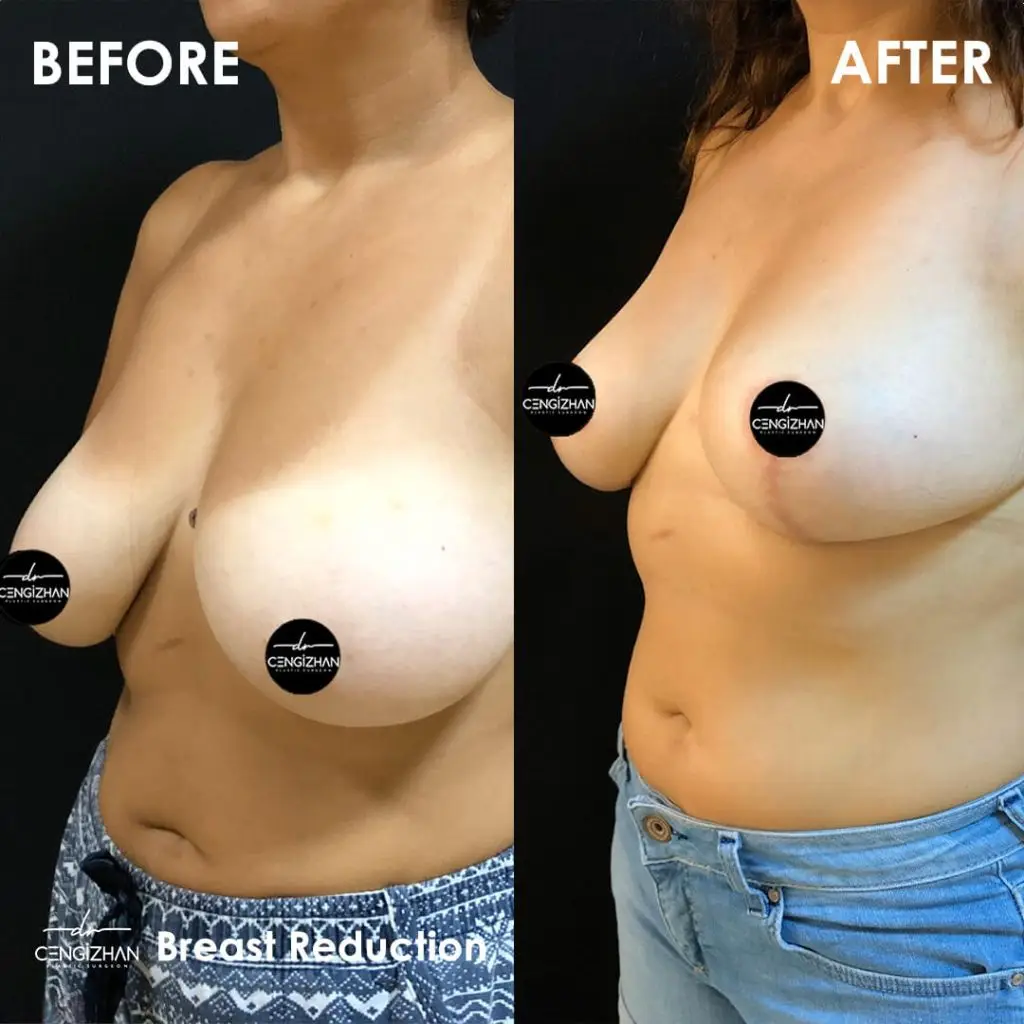
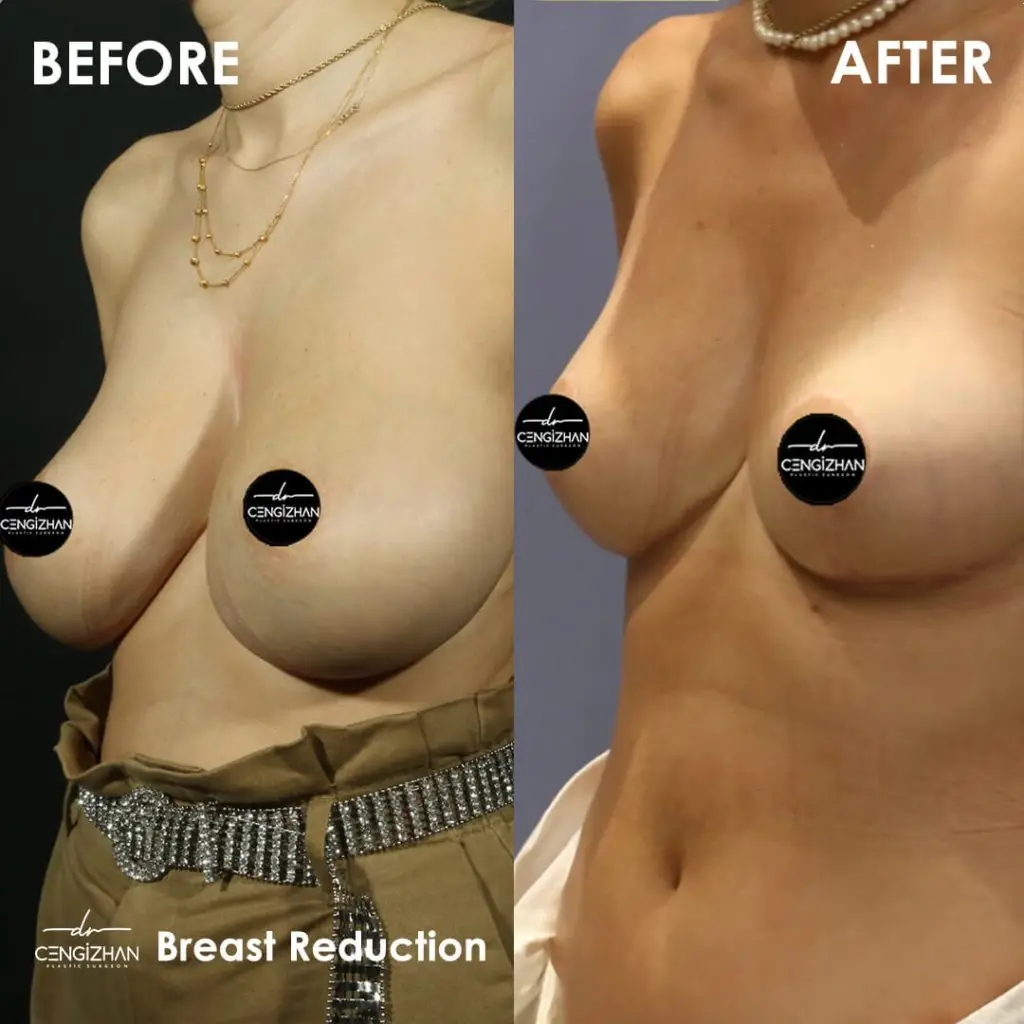
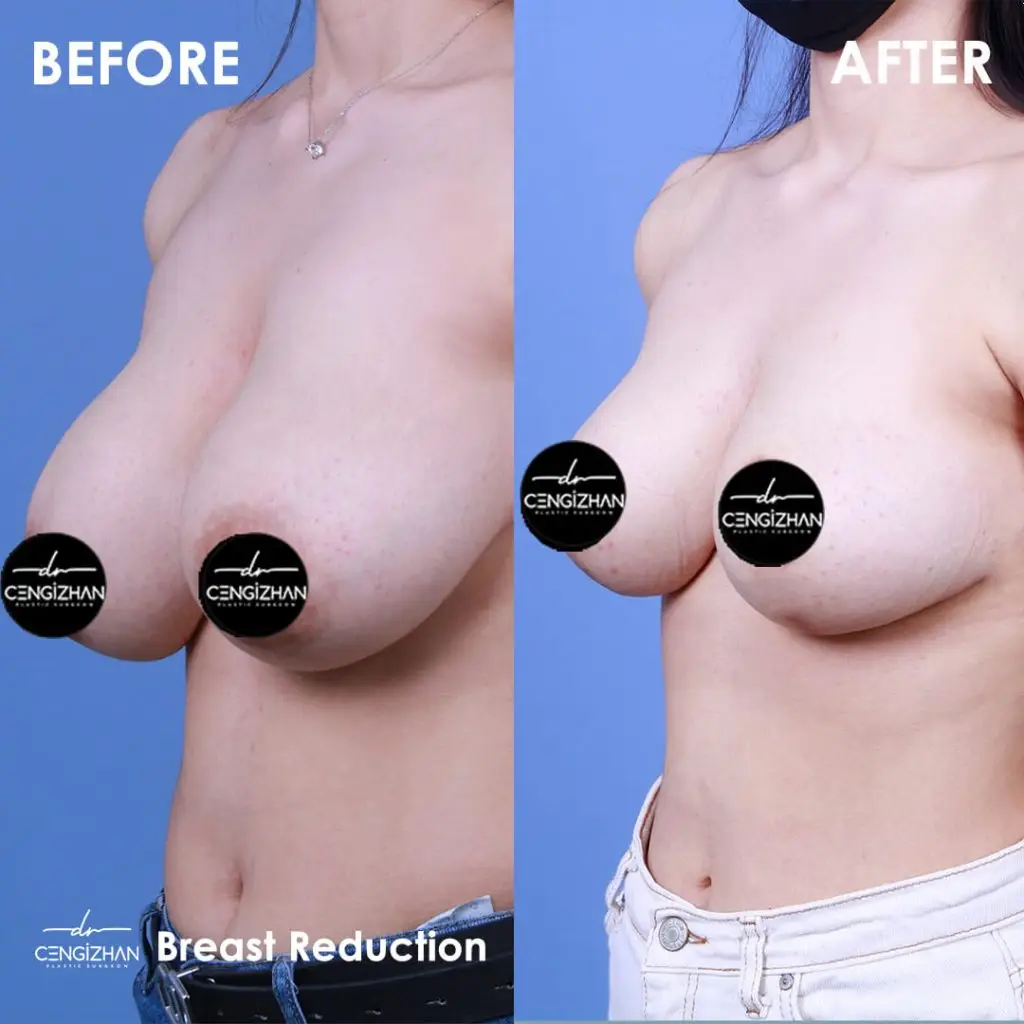
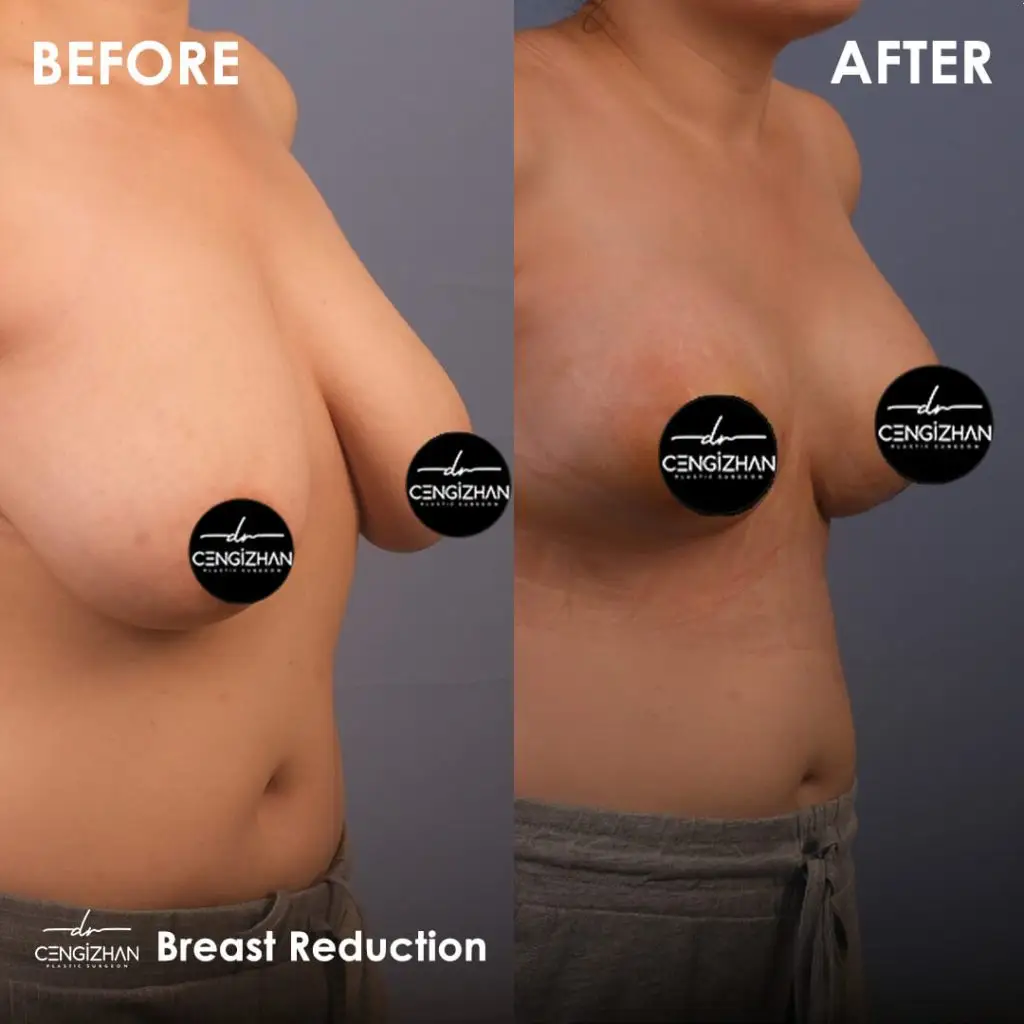
FAQ
- How long does a breast reduction surgery take?
A breast reduction surgery generally takes 2 to 4 hours depending on the complexity of the procedure, the amount of tissue being removed, and individual patient factors.
- Is it safe to get breast reduction surgery in Turkey?
No need to worry! Breast reduction in Turkey is widely considered safe and reliable by millions of previous patients. Even non-Turkish sources support the claim that Turkey is favored for its quality healthcare standards and affordability.
It should be also noted that Dr. Cengizhan is known for his craftsmanship and patient-focused approach, ensuring optimal results.
- Is there a minimum cup size for getting a breast reduction?

There is no universally standardised minimum bra size for getting a breast reduction. However, many surgeons generally consider reductions for patients with breasts starting at a C cup or larger, as such sizes are often associated with symptoms such as back, neck, and shoulder pain, skin irritation, and difficulties with physical activity. It is crucial to consult with an accredited plastic surgeon like Dr. Cengizhan who can provide personalized recommendations.
- Are breast reduction results permanent?
Reduction mammoplasty results are generally long-lasting, but several factors can influence their longevity:
- Weight Fluctuations: Significant weight gain or loss can change the size and shape of your breasts.
- Pregnancy and Breastfeeding: Hormonal changes and breastfeeding can alter breast size and shape.
- Aging: The natural aging process can affect the elasticity of the skin and breast tissue, potentially leading to sagging over time.
- Is there a best age to get breast reduction?
There is no specific “best age” for breast reduction, but it is generally recommended from age 18, once your breasts are fully developed. It is important to be in good health and have realistic expectations.
Click to consult with us free of charge to determine the right timing for you!
- How is breast reduction for men performed?
Men may develop enlarged breasts due to genetics, hormonal imbalances, obesity, or the use of certain medications or supplements that increase estrogen. Breast reduction for men, also known as gynecomastia surgery, involves removing excess breast tissue and fat, similar to the procedure for women. The difference is that men typically have much less scarring because the incision technique is different.
The procedure usually combines liposuction to eliminate fatty deposit. Surgeons strategically place incisions, usually around the edge of the areola, to minimize visible scarring and ensure a more contoured, masculine chest.
Learn more about how gynecomastia surgery can be the best step to boost your self-confidence!
- Can you get smaller breasts naturally?
Naturally reducing breast size through non-surgical methods is generally limited and often not permanent. Methods like weight loss, targeted exercises, and wearing supportive bras can sometimes lead to a slight reduction in breast size. However, these changes are typically minimal and may not be long-lasting.
- What is the average cost of breast reduction in Turkey?
The average cost of breast reduction surgery in Turkey typically ranges from $3,000 to $7,000 according to our research involving several clinics located in Turkey. But do not forget that the costs can vary depending on the surgeon’s experience, the clinic’s location, and the specifics of the procedure. It’s important to research and consult with several qualified surgeons to understand what’s included in the price and ensure you receive quality care.
- Can breast reduction cure gigantomastia?
Gigantomastia is a medical condition characterized by excessive breast growth, often causing significant physical discomfort and psychological distress. Thankfully, breast reduction surgery can effectively alleviate symptoms and improve quality of life for individuals with gigantomastia by reducing the size and weight of the breasts. It’s a commonly recommended treatment option for managing this condition.
- Is it possible to breastfeed after breast reduction?
Breast reduction surgery typically does not harm your ability to breastfeed, especially when it is done by a skilled & attentive plastic surgeon like Dr. Cengizhan. However, procedures involving incisions around the areola or under the breast crease might potentially affect milk production or flow. Despite this, most women who have undergone breast reduction state that they can still successfully breastfeed.
Albert Niepel, Sven Schwake, Mira Zeichmann, Ariel Noltze, Viktoria König, Fuat Sokullu, Clara Schenk, Shanon Pallikunnel, Dirk Hellekes, Rupert Koller, Lara Steinkellner; Influence of Breast Reduction Surgery on Long-Term Breast Cancer Risk in Austria. Breast Care 14 June 2022; 17 (3): 244–248. https://doi.org/10.1159/000517816

